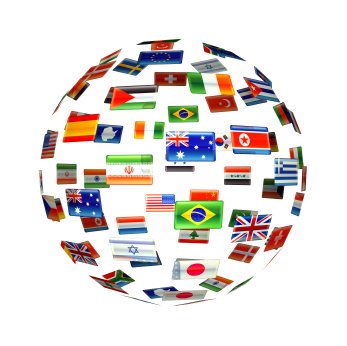 The CNET, which has already featured in this blog, is the Chambre Nationale des Entreprises de Traduction, or French organisation for translation companies. Every year, this trade union for professionals conducts a structural survey among translation companies in France. In 2010, the Observatoire de la Traduction outlined the translation market for 2009, the year following the economic downturn. Below are some key facts and figures.
The CNET, which has already featured in this blog, is the Chambre Nationale des Entreprises de Traduction, or French organisation for translation companies. Every year, this trade union for professionals conducts a structural survey among translation companies in France. In 2010, the Observatoire de la Traduction outlined the translation market for 2009, the year following the economic downturn. Below are some key facts and figures.
• Internal operations
– Of the companies polled, 45% of the workforce consists of project managers and 30% of in-house translators. This trend has been increasing since 2007. Translation companies have fewer translators and more project managers.
– Translation companies recruited less than they did in 2007, with only 34% of companies creating positions in 2009.
– Logically, translation companies therefore recruited more project managers (47%) than translators (28%).
• Services provided
– 75% of the services provided are translation services. Interpreting services, which only account for 11%, are followed by DTP, localisation and various other services.
– While the fields of translation and interpreting are extremely varied, technical translation represents the bulk of translations (20%). It is followed by legal translation (15.84%), editorial translation (12.67%), scientific translation (11.76%), tourism translation (11.31%) and medical and pharmaceutical translation (10.41%). All in all, a well-rounded market.
• CAT (Computer-Assisted Translation)
– 86% of translation companies use CAT tools. Trados is used by 61.67% of companies and Déjà Vu, which has already been mentioned in the blog, is used by 20% of them. Translation companies therefore readily use computer-assisted tools.
- Languages
– 48% of companies experienced a significant shift in the language pairs requested in 2009.
– Of the companies polled, 61.54% experienced a drop in requests for translations from/to German and 50% experienced an increase in Russian, English and Chinese.
• Activity
– More generally, translation companies are small companies operating on a human scale (80% post turnovers below €1.5 million) and working at a local level (30% work at an international level).
– 74% of companies intend to increase their turnover in 2010. Translation companies therefore remain optimistic.
– The average number of active clients per company is 252: a figure reflecting the size of companies.
– 30% of companies still rely on their major clients which represent over 20% of turnover. They must continue to develop.
2009 was a difficult year for translation companies, but it was especially difficult for new ones. Well-established companies also had to deal with budget cuts and fight to keep their market share.
It can be noted that translation companies are focusing more and more on their project managers, quality managers and client follow-up. Since companies are more reluctant to increase their workforce, there are fewer in-house translators and more freelance translators.
Later this year, we will present the results of the 2010 Observatoire de la Traduction.


